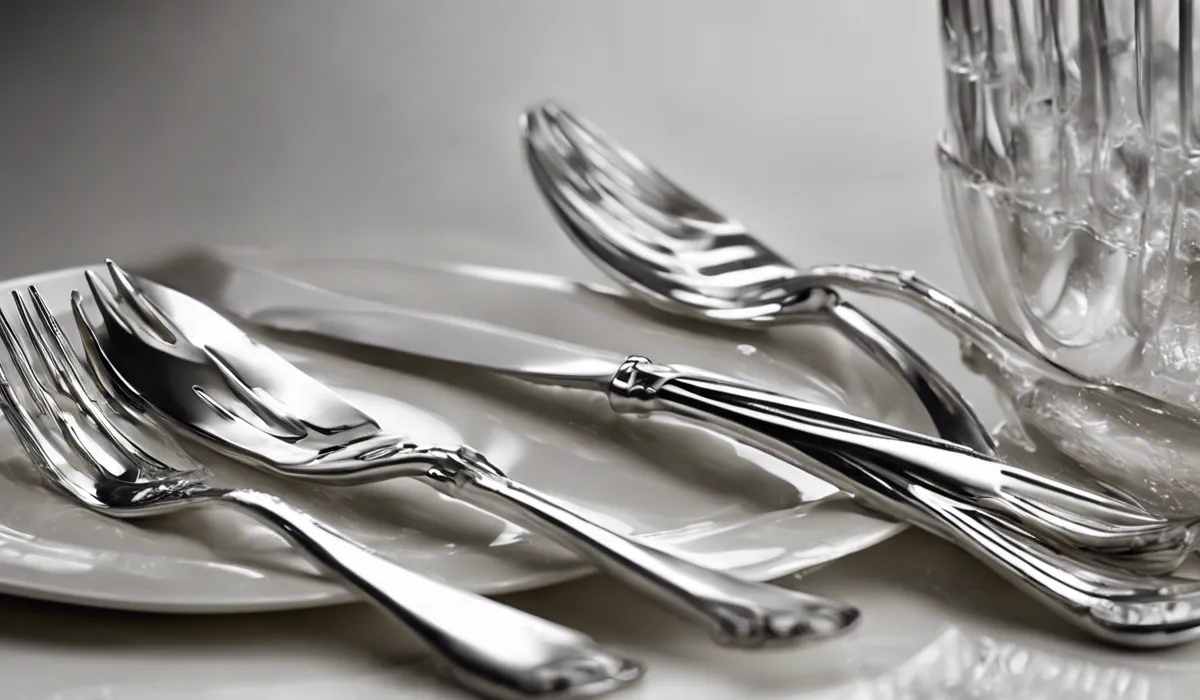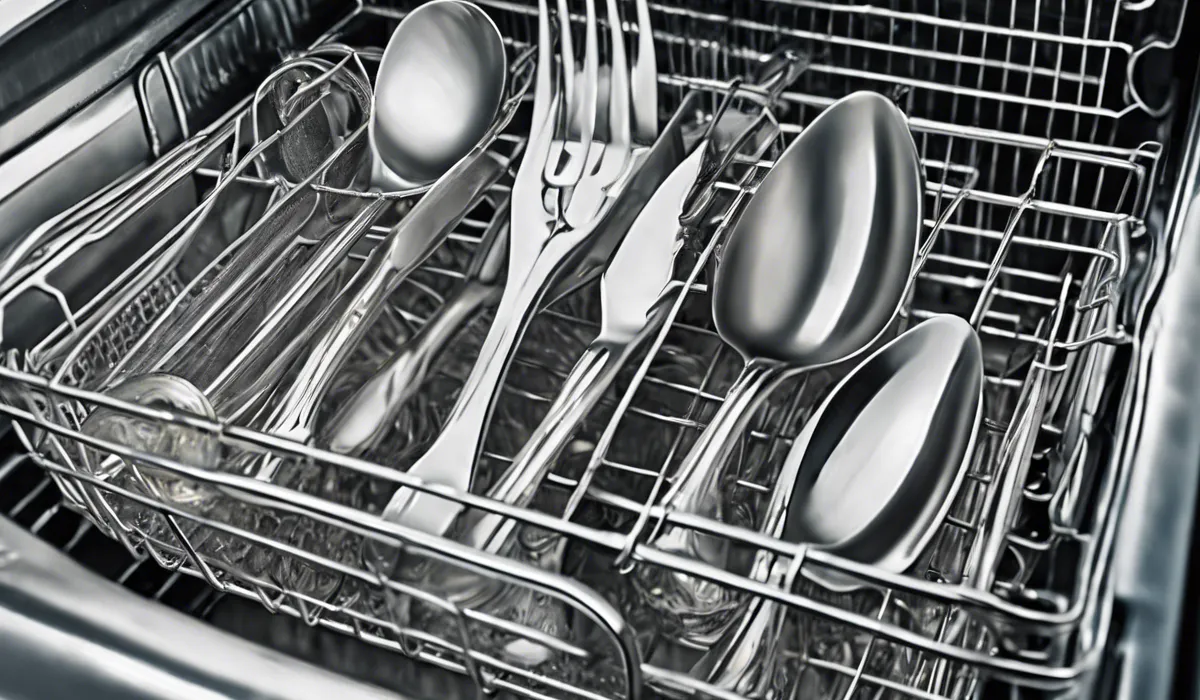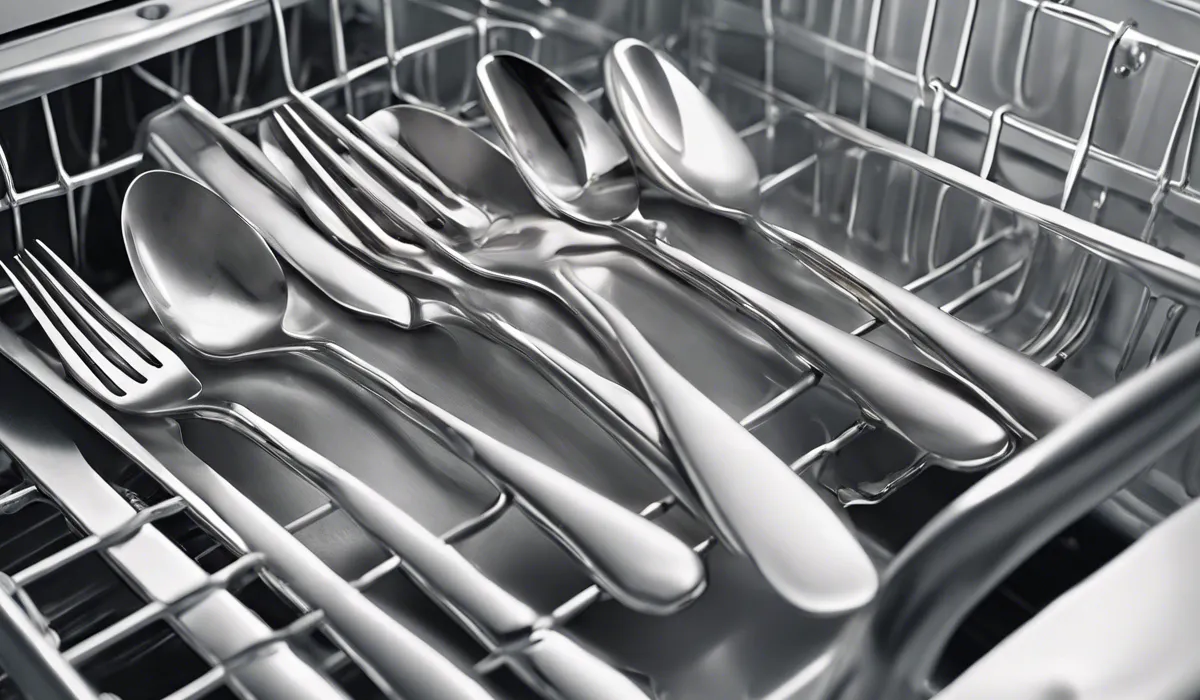How to Wash Silverware in Dishwasher Without Basket: Spotless Tips
To wash silverware in a dishwasher without a basket, secure utensils flat on the top rack or in a mesh bag. Ensure they’re spread out to prevent nesting and allow water to circulate. Avoid placing sharp knives facing up for safety.
Preparing Silverware for Dishwashing Without a Basket

Inspecting Silverware for Dishwasher Safety
Before placing your silverware in the dishwasher, it’s crucial to inspect each item for dishwasher safety. Check the manufacturer’s instructions to ensure they are suitable for dishwashing.
Be on the lookout for materials like wood, ivory, or certain plastics that might not withstand the heat and water pressure. This step prevents potential damage to your utensils and the dishwasher itself.
Pre-Washing to Remove Food Particles
Rinsing or pre-washing your silverware under running water can greatly improve the effectiveness of the wash cycle.
By removing large food particles, you prevent the clogging of dishwasher jets, ensuring a more thorough clean. A brief rinse can save time and water compared to hand-washing each item.
Grouping Similar Items
When preparing your silverware for the dishwasher, grouping similar items can enhance the cleaning process.
Forks with forks, and spoons with spoons, for instance, can prevent damage caused by items rubbing against each other. This method also simplifies unloading since you can put away all the same type of utensils at once.
Securing Small Items
To keep small utensils like measuring spoons or corn holders from getting lost, use a mesh bag or a homemade solution, such as wrapping them in a small cloth or using a rubber band to bundle them together.
This prevents small items from falling through the rack and potentially damaging the dishwasher’s mechanisms.
Loading Silverware in the Dishwasher

Using the Cutlery Rack or Dishwasher-Safe Container
If your dishwasher does not have a silverware basket, you can still use the cutlery rack or a dishwasher-safe container.
Place flatware flat on the top rack or inside a container to keep them secure during the wash cycle. This also allows water and detergent to reach every surface for a better clean.
Preventing Nesting of Silverware
When placing silverware in the dishwasher, ensure that utensils are spaced out.
This prevents nesting, where spoons or forks may stack together, which can block water and detergent from cleaning effectively. A good rule of thumb is to have some space between each piece of silverware.
Safely Positioning Sharp Knives and Utensils
It’s essential to position sharp items like knives in a way that prevents injury when loading and unloading your dishwasher. Place sharp knives with the blade facing down.
This not only ensures safety but also helps to protect the blades from dulling during the cleaning process.
Alternating Handles for Better Cleaning
For better cleaning results, alternate the direction of handles for spoons and forks.
With some handles facing up and others down, you’ll avoid the ‘spooning’ effect where utensils nest into each other, preventing a proper clean. This simple step can make a significant difference in the cleanliness of your silverware.
Dishwasher Settings and Maintenance for Best Results

Selecting the Right Wash Cycle and Temperature
Choosing the right wash cycle and water temperature is important for getting your silverware clean without causing damage.
Usually, a normal or auto cycle with a moderate temperature setting is sufficient. However, for heavily soiled items, a heavier cycle may be necessary.
Detergent Use and Types
Using the correct amount and type of detergent can greatly affect the outcome of your dishwashing. Too much detergent can leave a residue, while too little may not clean effectively.
Also, consider whether your water is hard or soft when selecting a detergent, as this can impact its effectiveness.
Adding Rinse Aid
Rinse aid is a helpful addition to prevent water spots on your silverware, especially if you have hard water.
It helps water to sheet off the surfaces of your utensils, resulting in a shinier finish. Most dishwashers have a compartment for rinse aid, which should be refilled regularly.
Dishwasher Maintenance
Regular cleaning and maintenance of your dishwasher ensure that it performs at its best. Monthly cleaning of the filter and spray arms, along with inspecting for any food particles or debris, can prolong the life of your appliance.
This also includes checking for and removing any items that may have fallen through the racks.
FAQs About Washing Silverware in Dishwasher Without Basket
Can you wash silverware in the dishwasher without using a basket?
Yes, you can wash silverware in the dishwasher without a basket by securing the utensils flat on the top rack or using a mesh bag to hold them in place.
Where should you place silverware in the dishwasher if there’s no basket?
Place silverware flat on the top rack of the dishwasher or inside a mesh bag to keep them secure during the wash cycle.
How can you prevent silverware from nesting when washing without a basket?
Ensure that silverware is spread out and not overlapping to prevent nesting, which allows for better water circulation and cleaning.
Is it safe to wash sharp knives in the dishwasher without a basket?
Yes, but always place sharp knives with the blade facing down to prevent injury when loading and unloading the dishwasher.
How do you ensure that water circulates properly when washing silverware without a basket?
To ensure proper water circulation, spread the silverware out and avoid any overlapping or nesting of the utensils during the wash cycle.
Final Thoughts
To effectively wash silverware in a dishwasher without a basket, lay utensils flat on the top rack or use a mesh bag to keep them secure. Spread them out to avoid nesting, ensuring proper water circulation.
Exercise caution by not placing sharp knives facing upwards to maintain safety during the washing process.





